Featured
MLA Balbir Singh Verma encroachment/illegal construction case: Govt.’s wrath reserved for common people, small farmers, laborers only
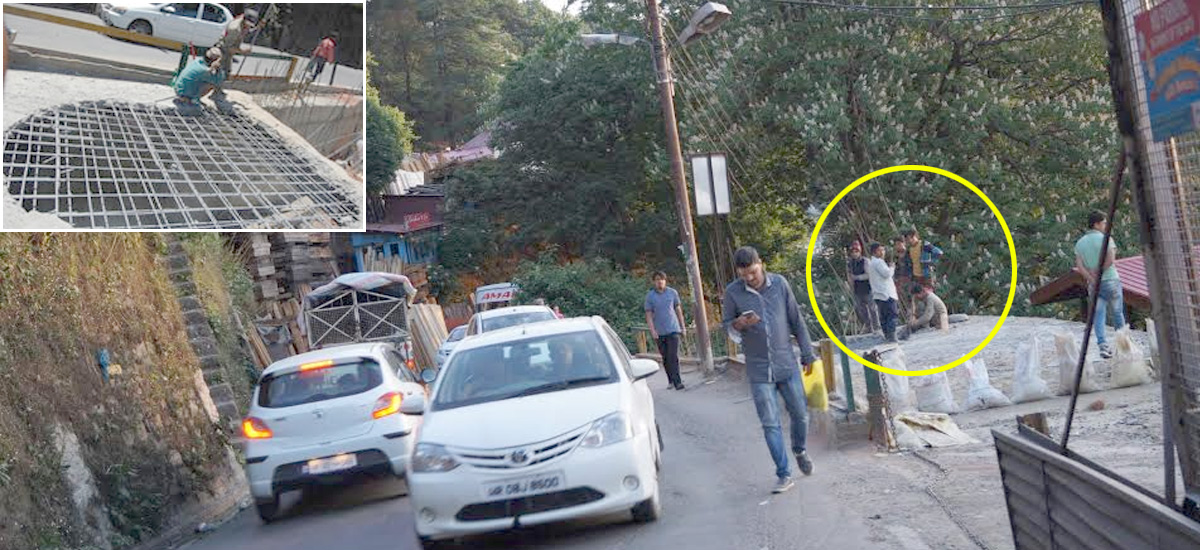
SHIMLA- MLA Balbir Singh Verma’s illegal construction of a ramp on the name of public path made on encroached land had made news in a daily last month. The idea was to connect his under-construction hotel in Lakker Baazar to the main road, but it sadly caught attention of the public and media, and the ‘VIP violator’ was forced to demolish it.
Once again, nexus between VIP encroachers and government departments has appeared. In this case, Himachal Pradesh Public Works Department (HPPWD), Town and Country Planning (TCP) and Shimla Municipal Corporation open heartedly supported Balbir Singh Verma, independent MLA from Chopal, in building a public path to connect the main Lakker Bazaar road to his under-construction hotel without seeking permission at all. The work was vigorously under progress for past couple of weeks until the issue was raised by a Hindi daily ‘Jagran’ on 28 April.
The HPPWD and Shimla MC woke up only after the news was published. When asked to produce permission for the alleged illegal public path in passed building map, the department informed that it never received any application regarding the same.
The hotel, according to Jagran, is in sinking zone. The permission for construction of hotel was obtained in 2010 during BJP government.
Let us remind you that MLA Balbir was one of the 34 crorepatis who fought 2012 HP assembly elections. He had shown assets worth Rs. 34 crore in his manifesto. Currently, that wealth might have multiplied many times. So, he is rich and he is a politician, an elected MLA who is enjoying perks of power like majority of elected MLAs do.
According to Jagran, SMC and HPPWD staff often visited the area around Balbir’s hotel but both kept their eyes and mouth shut.
But when the issue was raised by the daily, the SMC directed a team lead by Assistant Commissioner Prashant Sirkek to visit the spot. Taking notice of the situation, SMC put a stay on construction work immediately.
The HPPWD S.D.O Ravi Bhatti also visited the spot and asked the owner to provide passed building map. However, the department couldn’t find any map. In a statement, Bhatti confirmed that the department did not receive any request for constructing mentioned public path.
Despite confirmation, no department dared to demolish the path, and instead tried to kill time by passing notice to each other to delay action. SMC was even considering permitting construction of public path if the MLA requests for one in written application. But regular follow up on the issue by the daily eventually forced the MLA to demolish the illegal structure.
Literally, there is so much scope for VIPs even in offenses which deserve stern action from government.
What about the common men?
A few months ago, HPPWD had demolished illegal structures including residential ones constructed on encroached public land in Shimla city. It was done strictly with no mercy for violators, and even minute extensions of steps or canopy were met with strictly.
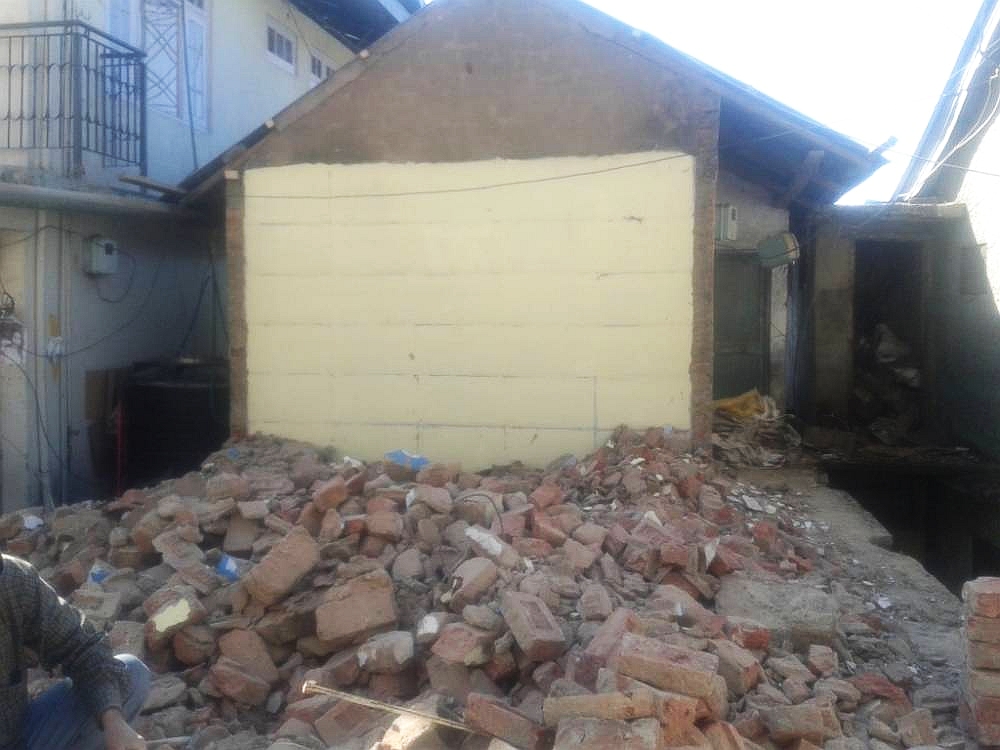
Similarly, the Forest Department axed thousands of full grown, fruit laden apple trees on encroached forest land, but again, the Govt. started with small growers (1-3 Bigha) instead of starting with big fish including politicians who have thousands of acres land encroached.
The labores in Kinnuar protesting for their pending wages and deprivation of laborer rights are being oppressed for last two years to facilitate exploitation of own people by a private hydropower company. According to CAG report, HP government not only gave undue benefits worth Rs 209.28 crore to Jaypee power company, which owned the 1000 MW Karcham Wangtoo hydel project in Kinnaur district, but also entertained its violations.
So, the ground reality of our democratic state is clear – laws are meant for common people. Case of Balbir Singh Verma’s under-construction hotel in Shimla city is an apt demonstration of how flexible our law is toward VIPs.
Although, it’s being demolished after the news caught attention of public, Balbir Singh Verma said in a statement that he had permission for the construction of mentioned public path and that he would never go against laws. If he had permission for it, then why it’s being demolished? What kind of joke is it with public, with public?
Featured
Himachali Sub-Nationalism: A Counter-Narrative To Tackle Hindutva In Himachal Pradesh
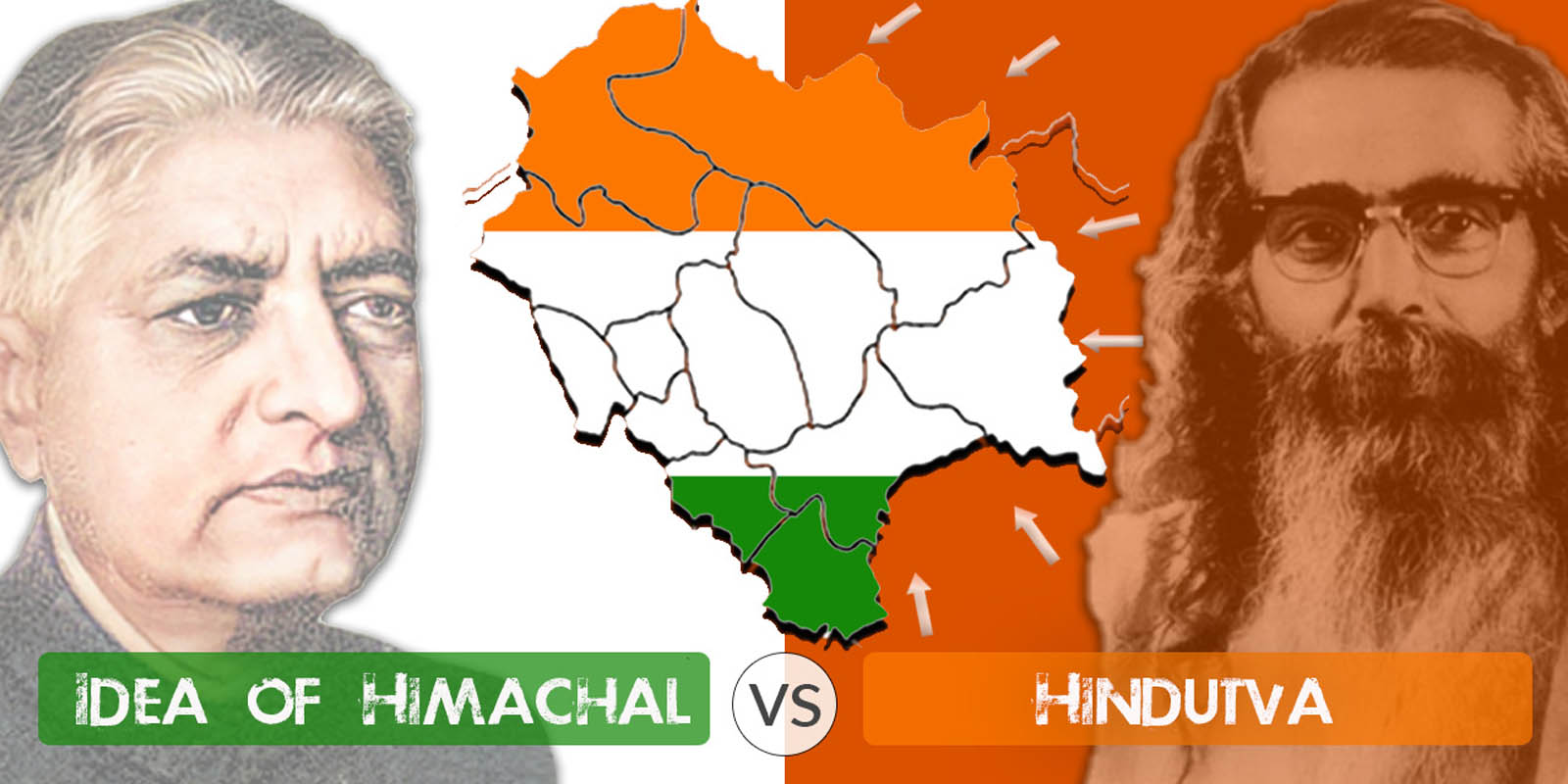
By – Vishal Sharma, a political science and public policy researcher/consultant. He holds an LL.M. in Legal & Political Aspects of International Affairs from Cardiff University (United Kingdom).
Himachali sub-nationalism can help tackle the Hindutva narrative in Himachal Pradesh which has long aimed at mainland-centric hyper-nationalism, cultural imperialism, linguistic imposition, and demographic change in the peaceful Western Himalayan province. A regional nationalism based counter-narrative that can be centered around the protection of Section 118 of the Land and Tenancy Act, 1972 and the revival of the Pahari (Himachali) language dialect chain is probably the need of the hour to keep away Hindutva and its caste/community and religion-based hegemonic politics from the province.
Himachal Pradesh and Hindutva
Himachal Pradesh has been a peaceful, riot-free, and harmonious province for the last 50 years. But as they say, nothing is perfect, similarly, a lot needs to still be achieved by the state on the policy front in relation to becoming economically self-sufficient and tackling the drug menace. On the other hand, in the political scheme of things the state till 2017 was governed on largely centrist lines that were slightly tilted towards regionalism. But post-2017 after Prem Kumar Dhumal’s shocking defeat things changed and Himachal Pradesh got its first purely Hindutva-minded Chief Minister. Jai Ram Thakur was handpicked by the RSS to lead Himachal Pradesh and take forward the Hindutva narrative which was largely on the backburner in previous BJP governments of the state as Prem Kumar Dhumal, a former Chief Minister of Himachal Pradesh was not from an RSS background and took a regional approach during his tenure, while Shanta Kumar another former BJP Chief Minister who although was from the RSS, but believed that Hindutva will not work in Himachal Pradesh.
Now coming to Hindutva, this idea as envisioned by MS Golwalkar is based on moral universalism and aims to establish a “Hindu Rashtra” (which has nothing to do with Hindusim and in a way misuses the religion) on the notions of civilizational colonialism. This very idea is used by the RSS in the present times to down ride the legal universalism-based constitutional idea of India. Over the last few decades in the public sphere, the idea of Hindutva has overshadowed the idea of India in especially the Hindi heartland, and in the coming decades, the RSS is looking to expand this mainland centric civilizational notion to the culturally different and non-mainland areas of especially the South of India, the North-East and the Far-North (Jammu & Kashmir, Ladakh, and Himachal Pradesh). Himachal Pradesh is high on their radar as they have their own government at place, and it can be said that over the years their narrative has gained some ground in ideally peace-loving Himachalis who were always seen to be non-supporters of such rigid ideologies whether it be on any side of the political spectrum. But the reverse seems to happen, and social engineering tactics have led to many moving towards Hindutva. On the flip side, those favoring the idea of India and other similar narratives have become silent due to the weakening of institutional setups which gave space to them.
The idea of Himachal and the grant of statehood
Moving on, Himachal Pradesh as I understand became a full-fledged constitutional state due to the efforts of our forefathers who envisioned a multicultural hilly province where people from numerous cultural zones like the Upper Western Pahari zone (includes parts of Shimla, Sirmaur, and Solan districts), Central Western Pahari zone (includes parts of Kullu, Mandi, and Bilaspur districts), Lower Western Pahari zone (includes parts of Hamirpur, Una, Kangra, and Chamba districts), Punjabi zone (includes parts of Una and Solan districts) and the Trans-Himalayan zone (includes parts of Kinnaur and Lahaul and Spiti) could live together, no matter what their ethnicity, religion or caste/community. This in fact can be termed as the idea behind the creation of Himachal, and to bring this idea into fruition in the 1950s and 60s the founding fathers of Himachal Pradesh led by Dr. YS Parmar worked beyond party lines to attain statehood for this hilly region stacked between Punjab (then Greater Punjab) and Himachal (then a UT). Geographical and linguistic parameters were set for the attainment of statehood and its unity, which can be considered as a very welfare-oriented and progressive approach, especially in a country where most of the political narratives are set on caste/community and religious lines.
The statehood movement was not merely an Indian National Congress (INC) exclusive movement and leaders from across the political spectrum did their bit. Some names which deserve special mention apart from YS Parmar were INC’s Tapindra Singh, Padam Dev, Vidya Dhar, Brahma Nand, Guman Singh and Amin Chand, revolutionary leftist leaders like Comrade Ram Chandra (INC) and Paras Ram (CPI), veteran Jan Sangh (now BJP) leaders like Daulat Ram Chauhan and Kishori Lal, and lastly regional stalwarts like Thakur Sen Negi and JBL Khachi. Through a study of the debates of that time, one also comes to know that all of them stood up in their own way and form for the Himachali cause putting aside their party ideologies. The INC and Jan Sangh (now BJP) leaders questioned the centrist attitude of their parties while leaders like Comrade Ram Chandra crossed all limits going to the extent of even warning the government of India in one of his addresses that a revolution may take place if statehood was not granted. Thakur Sen Negi and JBL Khachi were also so much into the Himachali cause that to strengthen the Himachali regional identity they formed the Lok Raj Party which was the first regional party of Himachal Pradesh. Thus, due to their effort statehood was finally attained in 1970-71.
The next steps in strengthening the idea of Himachal were also laid through the passage of Section 118 of the Land and Tenancy Act, 1972 which limited anyone from outside the state to buy agricultural land here, a boon for the Himachali people (who were mostly farmers) at that time, even till now this section is of utmost importance to Himachalis as it has helped in the protection of the distinct cultural identity of the state and has stopped demographic change. Another step in this direction was the unanimous passage of a resolution in the HP assembly in 1970 which declared Pahari as the mother language of the state, though over the years not much was done for the development of the language dialect chain but still people take pride in having this distinct linguistic identity. Dr. YS Parmar, Himachal’s first Chief Minister played a crucial role in both these initiations and paved the way for what according to me are the two pillars upon which Himachali sub-nationalism can be based, i.e., Section 118 and the Pahari (Himachali) language.
Need for Himachali sub-nationalism and its conceptualization
As stated earlier, in the initial years of statehood a lot was done to strengthen the idea of Himachal but slowly and steadily things started to change post-1975 and as the Delhi Darbar started becoming stronger, Shimla kept losing hardcore regionalists. Though still with the welfarist and progressive constitutional setup at bay things were going well with a hint of regionalism being used time in and time out by the principal parties in power. But as the Hindutva bandwagon reached Himachal Pradesh in 2017, things changed, and the moral universalism of Hindutva started questioning the constitution-based legal universalism. The public institutions started getting hijacked and the saffronisation of the public sphere started taking place. From RSS backed MLA’s being given Cabinet berths to other RSS ideologues getting appointed in important political positions, from grooming the next generation of BJP Himachali leaders in the RSS Shakhas to efforts towards the dilution of Section 118 of the Land and Tenancy Act, 1972, from imposing Sanskrit as the second official language of the state and sidelining the Pahari language to spreading communal tensions by doing D2D campaigns in favor of CAA and NRC, from spreading Islamophobia by terming Tablighi Jamaat followers as human bombs during the early days of the COVID-19 crisis to actively considering setting up Swarna Aayog (a commission for upper castes). A lot was done over the years which goes against the basic nature of this peaceful province and its polity.
This is in fact just the beginning, as recently the RSS Chief Mohan Bhagwat launched a three-year roadmap in Himachal directing its office bearers to take Shakhas to the level of gram sabhas in Himachal Pradesh before 2025 (their centenary year). One can only imagine that if so much has been done in a short span of time what will happen if the BJP comes back to power. Many although are skeptical whether the BJP will come back to power as since the last three decades every five years there is a change of regime in Himachal but the recent assembly election results in Uttar Pradesh and Uttarakhand show a different story altogether and nothing can be taken for granted. RSS’s Hindutva narrative is so dear to them that they can cross any limit to bring BJP into power in Himachal Pradesh and a mere tackling them on public policy issues revolving around Roti, Kapada, and Makaan will not help.
Thus, this is where the Himachali sub-nationalism narrative comes into play which the principal opposition parties should look to use. In fact, such is the trend in the last few years that in non-mainland states only regional nationalism has served as a counter to Hindutva nationalism. Sub-national counter-narratives worked well in non-mainland states like West Bengal and Tamil Nadu where local Bengali and Tamil identity narratives were used to constantly keep away the alien Hindutva identity. Invariably, in the long run, this counter-narrative seems to be the only way through which the federal structure of the country can be protected from Hindutva, as well as the survival of the constitutional layers of this country can be ensured. A positive response towards such a counter-narrative in Himachal could lead to a wider wave in especially the entire Far-North.
Upcoming assembly elections a referendum on Hindutva
The upcoming assembly elections in Himachal Pradesh will definitely be a referendum on Hindutva. With the people of the state having to choose between the narrative of Hindutva or any counter-narrative of the opposition. But the opposition should keep in mind that in order to defeat morality-based narratives a counter morality-based narrative is required and thus Himachali sub-nationalism centered around the protection of Section 118 and the revival of Pahari (Himachali) language dialect chain can be a counter-narrative which the people of Himachal Pradesh may be looking for. They could be asked to simply decide whether they prefer being a “Himachali” or a Hindutva subject divided into castes/communities like Brahmins, Thakurs, Punjabi Refugees, Khatris, Soods, Mahajans, Gaddis, Gujjars, SCs, STs, etc, or into religious identities like Hindus, Buddhists, Sikhs, Muslims, Christians.
In the end, all one can say is that we may sadly see the demise of the idea of Himachal if Hindutva is not defeated this time, and if this civilizational narrative is victorious then the traditional political spectrum in Himachal Pradesh will perish and the Hindutva political spectrum will rise. This may further lead to the emergence of new narratives which would be invariably aligned with the idea of Hindutva and not with the idea of India.
Disclaimer: The opinions expressed in this article are those of the authors. They do not purport to reflect the opinions or views of the Himachal Watcher or its members.
Featured
Intellectual Property Rights and Global Access to the Covid-19 Vaccine

By- Adv. Ankit Thakur, LLM in Intellectual Property Rights, Queen Mary University of London, UK. He is currently serving as a spokesperson of the Himachal Pradesh Youth Congress
Developing as well as developed countries must sought out their ways of getting their hands on the Covid-19 vaccines as it bound to have a direct effect on the health crisis faced by many countries. The piece highlights the relation between Intellectual Property Rights (IPR) and the global access to the Covid-19 vaccine around the world. It further highlights points concerning the strength Intellectual Property Rights can provide to every country which is fighting this pandemic.
Intellectual Property Rights (IPR) and its direct effect on life saving medicines is a debate that has been going on for decades. Now, we have seen COVID-19 survive for more than a year and still only a small number of vaccines have been given the green light for emergency sanction. It is becoming increasingly likely that the world may soon look quite disproportionate in one distinct way as hundreds of millions of residents in wealthy nations will be vaccinated before billions of people in developing countries get similar access. India and South Africa are leading the fight to get Covid-19 vaccines clear of the IPR protection and it is also being advocated that their contention would help mobilize additional manufactures and help address vaccine disparities around the globe. Meanwhile, some also argue that this approach can lead to discouragement of additional manufacturing investments as well as undermine long-run vaccine development programs, including to initiatives to address the emerging new COVID-19 variants. On the other hand, the current demand is to scale up the existing vaccine production as quickly as possible while maintaining strict safety and quality standards. For this argument to be true, there will be a need of additional manufacturers who could and would stand by Intellectual Property restrictions. I see no such evidence in this scenario, to the contrary, and taking such a stance towards Intellectual Property may slow down or compromise the production of life saving vaccines.
Pharma companies that have developed and produced various vaccines under enormous commercial and geopolitical pressure need to scale up production as quickly as possible to meet enormous immediate demands around the world. As per my understanding, these companies are already cooperating widely with competitors and generic manufacturers, including via voluntary licenses, contracted productions, and proactive technology transfer. Weakening the commercial incentive of the originator companies may reduce their interest in going forward with the intentional collaborations that are already responsible for total output of the vaccine.
Under the existing TRIPS agreement, signatory countries can already issue compulsory licenses to produce vaccines without taking permissions from the patent holder but not a single country has opted for this option. Voluntary licensing and technology transfer from companies who are the originators can help increase long term manufacturing capacity, especially if paired with public investment. Such companies are also involved in administering quality control standards which is particularly significant in the background of extensive vaccine use. Their cooperation is important for both speedy production of the vaccine as well as maintaining its quality.
Now, coming to the global access challenge the world is facing right now, can summed up into three main points. First, while high income countries and their governments are heavily funding R&D and manufacturing. But in their effort to get more vaccines advance purchase agreements have anticipated the supplies. Second, lack of increasing manufacturing capacity undermines national and international immunization programs. In a developing country like India, vaccine is manufactured by the Serum Institute of India (SII) which is already manufacturing the Oxford/AstraZeneca vaccine. However, the point to be noted here is upfront at- risk investment which requires to fulfil expectation of orders. The third reason is lack of capital in hand to pay for vaccines for countries whose income is low or just above low middle. Manufacturers costs must be met, COVAXIN, developed by Bharat Biotech, is struggling to meet its donation target to high income countries and other donors to enable it to contract for needed vaccines. None of manufacturers today are remotely capable of meeting the demands on a timely basis.
To increase the manufacturing capacity certain issues like risk-tolerant capital and a partnership platform to enable technology transfer to new manufacturing sites around the world need to be addressed. Such a platform can only succeed if both parties in technology transfer equation, the recipient and the originator companies have trust and confidence in the platform. It can be agreed that knowledge-sharing and technology transfer are the crux of the IPR, and patents and legal structures follow. Moderna, for example, has waived Intellectual Property enforcements for COVID-19 vaccines but has not widely shared its know-how, without the latter, the former action has not generated any generic production.
Such a situation gives rise to two broad areas of uncertainty. One, can Intellectual Property waiver be recognised as a symbolic gesture, even if it will have limited impact without broader knowledge sharing? Some will say yes, as it provides legal clarity to protect generic manufactures and signals shared commitment to human life and health over company profits and interests of wealthy countries. But I feel sceptic about it. I agree with the symbolic value, and I am not opposing it, but how will it affect the vaccine access is still to be answered. Two, if originator companies freely share all the know how would generic companies start manufacturing? I think we all would agree that there are generic manufactures with the capacity to produce at least some of the vaccines for e.g., Oxford- AstraZeneca, Johnson & Johnson and Novavax in the medium term, but in the absence of public subsidy and government’s direct help, commercial risk sustains as we cannot assess the total demand and performance of these vaccines against emerging variants.
Considering these risks, I still believe that the companies would invest up front to manufacture vaccines. Given that there is already competition between originators, my instinct is that we should continue to actively engage originators in scaling-up. Creating the right incentives for voluntary licensing and technology transfer because with COVID-19 ‘No one is safe until everyone is safe’.
In conclusion, to speed up vaccination rates around the world, especially in low and middle income level countries, we need more global manufacturing capacity for all COVID-19 vaccine platforms, but COVID- 19 vaccines from IPR will not lead to scaling up the production of the vaccine and as a result will not improve parity or access. Policy makers should undertake measures to eliminate or limit monopolies on the production of the COVID-19 vaccine, using a combination of incentives, mandates, and subsidies. Companies that have patents or biologic resources can be remunerated, through royalties or other reward schemes. There are many inefficiencies in the current market structure and many parts of this market are broken and are highly unfair in terms of global access, but the current inefficient structure can still get some things right if all like-minded communities get together on the issue of global access with the right tools, such as technology transfer facilitation, voluntary licensing and overlapping pricing. As the longer the pandemic exists, the greater the harm in terms of our health, economic and social welfare.
Image: Gerd Altmann from Pixabay
Disclaimer: The opinions expressed in this article are those of the authors. They do not purport to reflect the opinions or views of the Himachal Watcher or its members.
Featured
How sluggishness, poor governance aggravated water crisis of Shimla city

Shimla: The ongoing water crisis has not only highlighted the change in weather pattern due to environmental degradation but also exposed a lack of complete seriousness in government towards the welfare of the public in reality.
It applies not only to the current government but also to the previous governments of both Bhartiya Janata Party and Congress.
The Kol Dam water-supply project, which was a long-term solution, is confined to files and DPRs for at least five years. In 2014, the Union Government had rejected the DPR sent by the State Government citing several discrepancies. The SMC couldn’t even fulfil conditions of the World-Bank for the funding of the project until recently. This project has a capacity to supply non-stop water to the town and its surrounding areas upto 2050.
The governments never prepared a contingency plan to deal with situations Shimla is facing currently.
BJP’s Chain of Command Collapsed
Now, all major parties are playing politics over the crisis. It is a bad news for Himachal that even such urgency of matters could not unify the politicians. Rather, BJP’s own chain of command appears to be collapsing.
BJP’s own Councilors are questioning how the party or the government could allow the Mayor Kusum Sadret – the elected leader of the Ward Councilors and the citizens – to go on a tour with her private secretary at such a crucial time.
After a rucksack over Mayor’s China tour, the Deputy Mayor and BJP’s Ward Councilor had to slip away from the meeting the SMC had called today. When the party with the majority is walking out, it is not a healthy sign for the democratic mechanism.
It is not hard to realize that her presence could have hardly made any difference, but, as a leader, her team expected her to stand with them at least for the sake of their moral.
The Deputy Mayor of Shimla, Rakesh Sharma, who was left alone by the Mayor to face the wrath of the Ward Councilors and the people in times of, perhaps, most severe water crisis Shimla ever faced, had called an emergency meeting of the Councilors on Monday. However, several councilors didn’t even show up.
Bhartiya Janata Party’s own Councilors approached the Chief Minister with a complaint regarding the Mayor’s official China tour when the city required all human sources from top to bottom.
VIP Culture Dominated Even in Times of Crisis
After widespread complaints of regular supply to VIPs and their near and dear, the High Court of Himachal Pradesh had on Tuesday taken cognizance of the patronage being given by the government to VIP culture.
It’s perhaps the ugliest part of the ongoing crisis. Wealthy and influential are weighing heavy on commoners even in such hard times.
The Chief Minister held two consecutive meeting on Monday. Shimla was divided into three zones and water supply once in three days was assured from May 29. Some regions on Wednesday received a partial supply of water.
However, the residents complained that they did not receive supply despite issuance of the time-table issued by the SMC. They also complained that the numbers provided by the SMC were either switched-off or were not responding.
To make the situation more grave, the government used police to repress the protests, which could have led to a full-on war anytime. On Tuesday, police officials were seen thrashing protestors, who had gathered at the SMC’s Office.
Transfers Backfire
The bulk re-shuffling of the staff and transfers of some officials from the Shimla Municipal Corporation have backfired at the government.
The government had to reportedly call back at least two of its officials, who were transferred by the Jai Ram Thakur-led Government. The new choice of the new government failed to respond to the situation entirely.
A Disparity in Water-Supply Statistics
A disparity prevails over the total amount of water being supplied to town as the government’s figures did not match with those of the SMC.
While the Chief Minister claimed the water consumers of Shimla town were getting 28.93 MLD water per day as compared to 32.39 MLD in 2016 and 35.64 MLD per day in the Month of May 2017, the SMC claims the supply is has dipped upto 20 to 21 MLD per day.
However, on Wednesday, the Government claimed that about 21 MLD was distributed to the people of the town.
The former-Mayor of Shimla, Sanjay Chauhan, in a media statement, said that during his tenure, they were receiving less than 20 MLD water after the Ashwani Khad water-scheme was closed due to jaundice outbreak in 2015. He said, despite it, they had provided the city with a water supply on every third day.
There seems to be no coordination between the officials of the Shimla MC as well as with other departments.
Allegations of working in nexus with water mafia to create artificial scarcity have also surfaced on a national media channel.
Impacts of Water Crisis
The water scarcity has brought several set-backs for Shimla city during the peak tourist season. The restaurants have closed their toilets for customers. The hotels are paying anything between Rs. 5,000 to Rs. 8,000 for a tanker of water. The hoteliers are charging their guests for additional water. The hotels had to cancell their reservations.
Tourists are disappointed as they are paying Rs. 100 to Rs. 200 per bucket at hotels.
Without water, the people had to start using disposables. The sale of disposables has also gone so high that shopkeepers are selling one disposable cup for as much as Rs. 5 to Rs. 10.
The public is circulating messages of social media urging tourists not to visit Shimla and consume the share of their water amid scarcity. It is ironical because Shimla had been one of the most popular international tourist destination.
Dhabas and small restaurants are buying impure water from private tankers, which poses several health risks as this water is used in meals and washing of utensils.
The crisis has derailed the town completely.
Reforms on Social Level
Rain and snow deficient winter season, in fact, led to drying up of water sources on which the Shimla city had been depending since 1875 – the year town received its first water-scheme. This is the cause of the chaos created by severe drinking water paucity in the city, says the Government, Irrigation Public Health Department, and the Municipal Corporation in defence.
The rain and snow deficiency is the result of a change in weather pattern due to the o felling of thousands of trees in a short period of time for developmental works and to free encroachment of forest lands. Rohtang-Pass has aptly shown adverse effects of rising air pollution due to excess vehicular activity.
The Transport Department, Pollution Control Board, Municipal Corporations and Councils are still stuck at burning daily solid waste – one of the major causes of air pollution.
There is no sign of promotion of rainwater harvesting or water-recycling at large hotels and other public and private establishments. It is during the crisis when, on the macro level, the state government has proposed a Rs. 4751 crore project for funding to the union government for rain water harvesting in the state.
The natural water sources were ignored by modern Shimla, and now the public is rushing back towards them. However, these sources are also giving up as no one ever bothered to revive them.
The Government does take plantation drives, but there is no follow up regarding the survival rate of saplings. In addition, the suitability of plantation is ignored while plantation drives.
The masses needed awareness, which was not on the priority list of the government.
The public is also not interested in rectifying their attitude towards environmental protection and water conservation. It’s astonishing that storage tankers continue to overflow and supply line can still be seen leaking. Again, it is a fact that government needed to work scientifically to de-condition the poor psycho-social condition of the public.
However, here we find that even our top leaders need de-conditioned first.

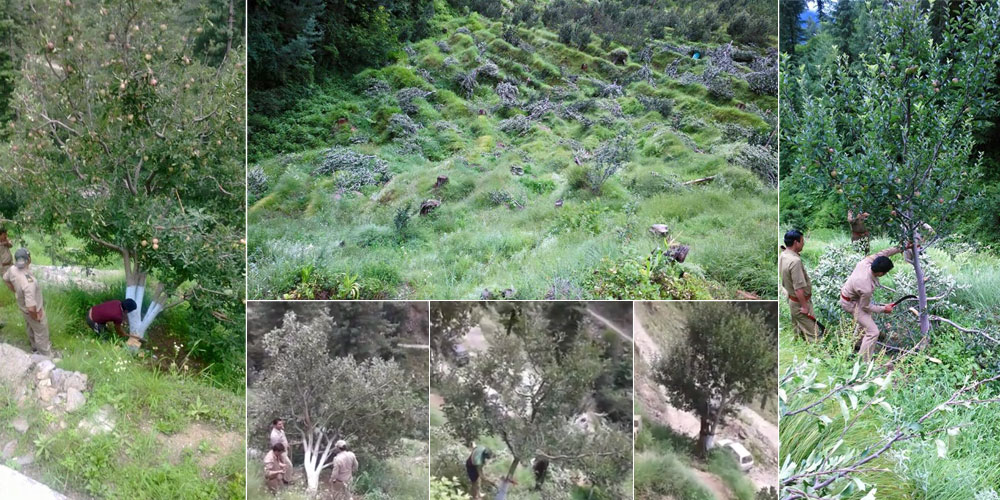





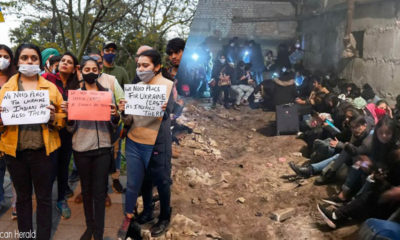

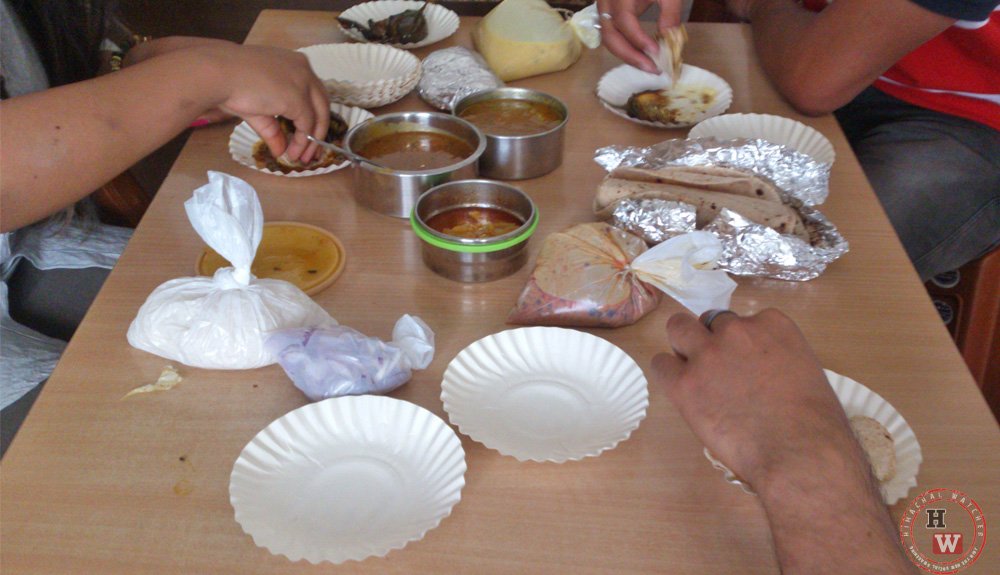





 Home Decor Ideas 2020
Home Decor Ideas 2020
